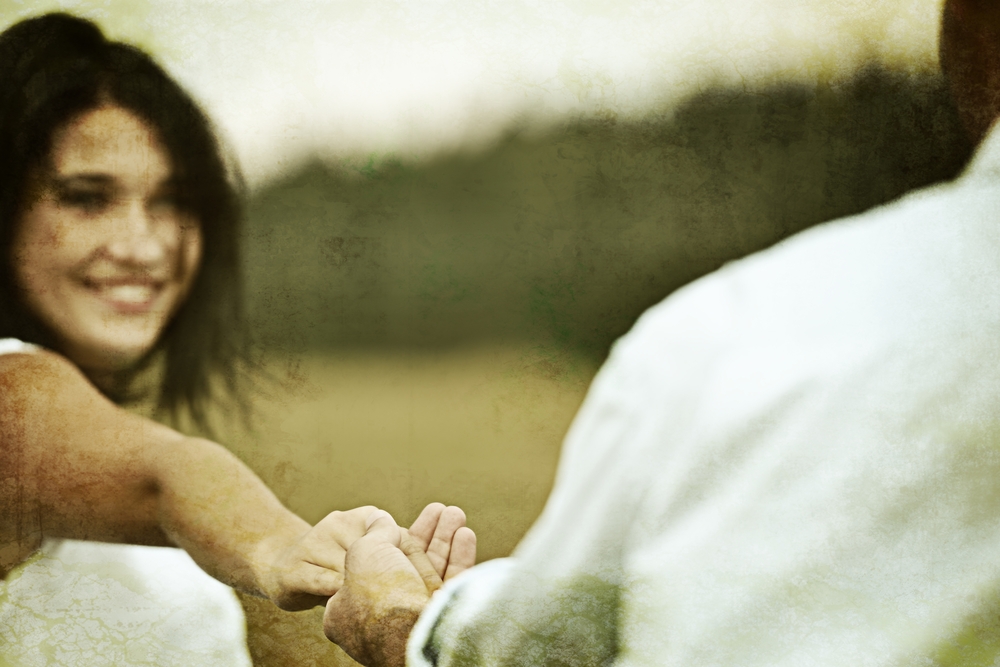It’s fun. It’s easy. It’s cheaper than relationship therapy and it can put the handbrake on the downward slide to arguing over the tangerine armchair that you only started wanting when he wanted it too.
In a comparison with other more intense relationship training, this simple activity has proven to be a surprisingly effective way to keep a relationship firing.
Research has shown that watching a movie centred around an intimate relationship, and chatting about it together afterwards, is at least as effective as couples therapy and training in fending off separation and divorce. (Interested? Keep reading for the list of suggested list of movies.)
What They Did:
The study randomly assigned 174 couples to one of three groups:
-
Conflict Management:
Couples were taught how to discuss heated issues and channel the focus on what is being said, rather than on formulating a response.
-
Compassion and Acceptance Training:
Through a series of lectures and exercises, couples were encouraged to: work together as a team, approach their relationship with greater empathy and compassion, practice random acts of kindness and affection, and use language that communicated acceptance.
-
Movie and Chat:
Couples attended a 10 minute lecture about how watching other couples in movies could highlight both the healthy and destructive behaviours in their own relationships. They then watched and discussed movies which centred around an intimate relationship.
What They Found:
The groups were compared three years later and all had a similar divorce and separation rate of 11%.
This was compared to a rate of 24% for a group of similar couples who received no training or instruction.
Watching relationship movies together and chatting about them afterwards is just as effective in preserving a relationship as more intensive programs.
What makes a movie and a chat so special?
As explained by Ronald Rogge, Associate Professor of Psychology at UCLA,
‘I think it’s the couples reinvesting in their relationship and taking a cold hard look at their own behavior that makes the difference. The sad truth is that when life knocks you down, you come home and the people you are most likely to lash out at in frustration are the ones you love the most.
For these couples to stop and look and say, ‘You know, I have yelled at you like that before. I have called you names before and that’s not what I want to do to the person I love the most.’ Just that insight alone, is likely what makes this intervention work.’
Rogge adds,
‘You might not be able to get your husband into a couples group, especially when you are happy, but watching a movie together and having a discussion, that’s not so scary. It’s less pathologising, less stigmatising.’
Although the research looked at couples in the early stages of marriage, finding an innocuous, easy way to look at the relationship is going to be good for any couple at any stage of their relationship.
In any relationship, having focused time with each other, free from the distraction of work, children, dishes, dinner will be sustenance for any relationship.
As Rogge notes, ‘The results suggest that husbands and wives have a pretty good sense of what they might be doing right and wrong in their relationships. Thus, you might not need to teach them a whole lot of skills to cut the divorce rate. You might just need to get them to think about how they are currently behaving. And for five movies to give us a benefit over three years – that is awesome.’
Keen to try? Click here for the list of movies and discussions questions used in the study.


![It’s the simple things that are everything. We know play, conversation, micro-connections, predictability, and having a responsive reliable relationship with at least one loving adult, can make the most profound difference in buffering and absorbing the sharp edges of the world. Not all children will get this at home. Many are receiving it from childcare or school. It all matters - so much.
But simple isn’t always easy.
Even for children from safe, loving, homes with engaged, loving parent/s there is so much now that can swallow our kids whole if we let it - the unsafe corners of the internet; screen time that intrudes on play, connection, stillness, sleep, and joy; social media that force feeds unsafe ideas of ‘normal’, and algorithms that hijack the way they see the world.
They don’t need us to be perfect. They just need us to be enough. Enough to balance what they’re getting fed when they aren’t with us. Enough talking to them, playing with them, laughing with them, noticing them, enjoying them, loving and leading them. Not all the time. Just enough of the time.
But first, we might have to actively protect the time when screens, social media, and the internet are out of their reach. Sometimes we’ll need to do this even when they fight hard against it.
We don’t need them to agree with us. We just need to hear their anger or upset when we change what they’ve become used to. ‘I know you don’t want this and I know you’re angry at me for reducing your screen time. And it’s happening. You can be annoyed, and we’re still [putting phones and iPads in the basket from 5pm] (or whatever your new rules are).’♥️](https://www.heysigmund.com/wp-content/plugins/instagram-feed-pro/img/placeholder.png)
Leave a Reply